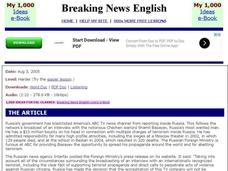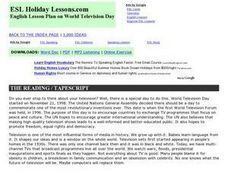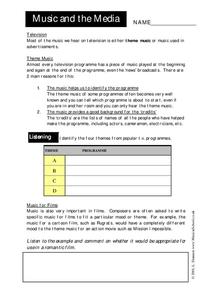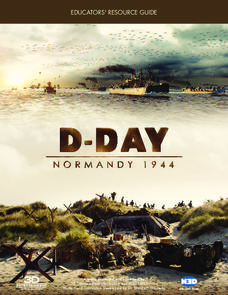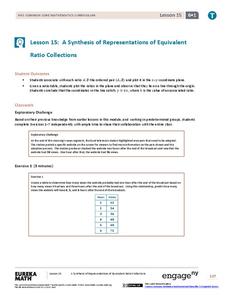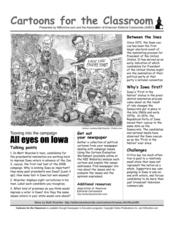Curated OER
Breaking News English: TV News about Russia
In this TV News about Russia worksheet, students read the article, answer true and false questions, complete synonym matching, complete phrase matching, complete a gap fill, answer short answer questions, answer discussion questions,...
Curated OER
World Television Day
For this World Television Day worksheet, students complete activities such as reading a passage, matching phrases, fill in the blanks, multiple choice, spelling, sequencing, unscrambling sentences, writing questions, take a survey, and...
Curated OER
High-Definition Digital Television: Why Make the Switch?
In this digital television worksheet, students read about the advantages of using digital television. They answer three critical thinking questions about the advantages and disadvantage of digital television.
Curated OER
The Case of the Electrical Mystery
In this electrical mystery worksheet, students watch a television broadcast called "The Case of the Electrical Mystery". They answer 8 questions about how detectives solve problems presented in the segments. Topics include hypothesizing,...
Curated OER
Conversation Lesson: News
In this conversation lesson worksheet, 7th graders use context clues to get the meaning of 8 words, then select 6 news stories from a list of 12 and explain why they would choose those for an evening TV news broadcast.
Curated OER
Breaking News English: Russia Bans America's ABC TV News Team
In this English worksheet, students read "Russia Bans America's ABC TV News Team," and then respond to 47 fill in the blank, 7 short answer, 20 matching, and 8 true or false questions about the selection.
Curated OER
Describing Trends
In this describing trends worksheet, students read information about broadcast TV plus cable and satellite TV, observe an annual use of the media graph and describe the trends. Kids also read a text about advertising, interpret a graph,...
Classroom Law Project
Should we believe everything we read? Becoming a discerning consumer of media
Class members investigate the role media should play in a healthy democracy. As part of this study, groups analyze political advertising, use FactCheck to assess not only the veracity of but the persuasions techniques used in candidates'...
Curated OER
Can You Hear My Now?: Getting the Message Across
In this power transmittance worksheet, students read about sources that transmit power and are given a chart with the distance and the power transmitted by each device. Students determine the intensity in watts of the power for each...
Curated OER
Primary History: Viking Settlements
In this Viking culture worksheet, students complete 4 extension activities to learn about Viking settlements. Students write a newspaper story, a TV newscast between Alfred the Great and the Danes, use a map to locate modern towns that...
Curated OER
Music and the Media
In this music media worksheet, students read the statements about television and theme music and then identify the four themes from popular t.v. programs.
Curated OER
ESL Advanced Reading Comprehension
In this advanced ESL reading comprehension instructional activity, students read a detailed article about a couple who sues a TV company. Students then answer 7 true/false questions. This is most appropriate for adult ESL students.
D-Day Normandy 1944
D-Day Normandy 1944
No study of World War II would be complete without an in-depth examination of the events of June 6, 1944. Pascal Vuong's D-Day Normandy:1944, is the perfect vehicle to convey the sheer magnitude of the events that have been called...
EngageNY
A Synthesis of Representations of Equivalent Ratio Collections
Make all the ratio representations fit together. The 15th segment in a series of 29 presents ratio problems to solve. Scholars use a variety of representations to respond to the questions. The problem set has pupils show how the...
Shmoop
ELA.CCSS.ELA-Literacy.SL.11-12.2
One way to get your class to evaluate and synthesize multiple multimedia sources is through a research project. The idea here is that class members will watch videos and listen to scientific debates in order to create a casebook about...
Humanities Texas
Primary Source Worksheet: Text of “Prouder, Stronger, Better"
Political ads as primary source documents? But of course. Viewers analyze the strategies involved in the Republican Party's 1984 advertisement in support of Ronald Reagan's reelection.
Curated OER
Primary Source: Lucy
In this primary source worksheet, students read a selection about Lucy, a skeleton discovered in 1974, then complete a set of 4 document-based questions.
Curated OER
Cartoons for the Classroom: All Eyes on the Iowa Caucus
Explore the primary elections through political cartoons. Three talking points guide deeper thinking as pupils analyze a cartoon, which depicts the 2008 campaigning in Iowa. Analysts identify caricatures, research why winning Iowa is...
Curated OER
Cartoons for the Classroom: All Eyes on Iowa
In this current events worksheet, students analyze a political cartoon about the Iowa caucus and respond to 3 talking point questions.
Curated OER
Breaking News English: Violence Erupts Across Egypt
In this English worksheet, students read "Violence Erupts Across Egypt," and then respond to 1 essay, 47 fill in the blank, 7 short answer, 20 matching, and 8 true or false questions about the selection.
Curated OER
Read loud: The Media
In this media read aloud activity, middle schoolers read a dialogue aloud in pairs. Student A will ask a question about the media, and Student B gives the answer.
Curated OER
Oprah Winfrey
In this famous person worksheet, students read a passage about Oprah Winfrey and then complete a variety of in-class and homework activities to support comprehension, including partner interviews, spelling, cloze, synonym...
Curated OER
Music and the Media
In this music and media worksheet, students read a brief description of theme music and music for film and then complete a graphic organizer and respond to a short answer question.
Curated OER
Holidays: New Year's Eve/New Year's Day
In this foreign language worksheet, learners read nine sentences about New Year's traditions. They are given two choices for each of the 13 blanks.
